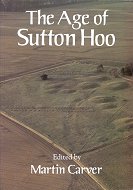
Divided into four parts, it argues for a set of principles in Part 1, describes work in the field in Part 2 and how to write up in Part 3. Part 4 describes the modern world in which all types of archaeologist operate, academic and professional. The central chapter ‘Projects Galore’ takes the reader on a whirlwind tour through different kinds of investigation including in caves, gravel quarries, towns, historic buildings and underwater.
Archaeological Investigation intends to be a companion for a newcomer to professional archaeology – from a student introduction (Part 1), to first practical work (Part 2) to the first responsibilities for producing reports (Part 3) and in Part 4 to the tasks of project design and heritage curation that provide the meat and drink of the fully-fledged professional.
The book also proposes new ways of doing things, tried out over the author's thirty years in the field and here brought together for the first time. This is no plodding manual but an inspiring, provocative, informative and entertaining book, urging that archaeological investigation is one of the most important things society does.
By the eleventh century the site was abandoned, but was remembered again in the early twelfth century when it became the parish church of St Colman. In the later middle ages it experienced an upsurge of activity with fishermen and metalsmiths settling beside an enlarged community church. When the Reformation arrived at Portmahomack about 1600, the village moved to the harbour and the old church of St Colman remained on its own, acting for another four hundred years as a weathervane of local society and its beliefs.
Rediscovered by archaeologists in the 1980s, from 1994 to 2007 the site at Portmahomack saw one of the largest research excavations to have taken place in Scotland. Opened by Charles, Prince of Wales, the museum in the church of St Colman’s displays these discoveries and is visited bv people from all over the world.
This highly illustrated volume is the first book that attempts to describe the experience of all levels of society over the whole island using archaeology alone. The story is drawn from the clothes, faces and biology of men and women, the images that survive in their poetry, the places they lived, the work they did, the ingenious celebrations of their graves and burial grounds, their decorated stone monuments and their diverse messages.
This ground-breaking account is aimed at students and archaeological researchers at all levels in the academic and commercial sectors. It will also inform relevant stakeholders and general readers alike of how the islands of Britain developed in the early medieval period. Many of the ideas forged in Britain’s formative years underpin those of today as the UK seeks to find a consensus programme for its future.